Picture: An anti-Russian satirical map produced by a Japanese student at Keio University during the Russo-Japanese War, 1904; Source Wikimedia Commons
Motto: In the 70’s and 80’s West Germany spent an average of 3,4% of its GDP on defense. In 1983, President Ronald Reagan referred to the Soviet Union as an Evil Empire. Today the military doctrine, capabilities, exercises and statements of its leadership qualify Russia as an adversary. Nevertheless, we are not in a Cold War any more. Still, for military or civilian strategists whose task is to care about preparedness of their states, there are similarities between the Cold War period and today.
Introduction
We are living in an interesting period of history,
with exciting times also being ahead of us. The United States declares the need
to react to the significant development of security and military doctrines,
capabilities and the strategies of the adversaries. According to the latest US
documents, such as the “National Security Strategy”, new “US Defense Strategy”
and “Nuclear Posture Review”, the USA is going to adjust the defense and
deterrence architecture to defeat the adversary strategy. The USA claims it
wants to strengthen the integration of nuclear and non-nuclear military
planning and to apply a tailored and flexible approach to deterrence of different
adversaries. Sooner or later, this US intention will be mirrored in the NATO debate
on defense and deterrence posture. The Czech Republic cannot stay idle. It
needs to be prepared for it, together with the states of the Eastern flank of
NATO which are most exposed to the Russian threat.
The real nature of the Russian threat can be learned only in a comprehensive manner by combining the analysis of its capabilities, doctrines, exercises and decision maker’s statements. The military doctrine of Russia is steadily developing. So is its force posture and capabilities. The division line between offensive and defensive tactics is blurring. Originally a defensive strategy, known as the“Anti-Access/Area Denial (A2/AD)” is placed into offensive scenario that envisages outstretching the A2/AD umbrella above the Baltic states. Number of Russian nuclear weapons with very limited yields on vast array of delivery platforms have rather demonstrative than tactical meaning. Russia, being aware of its limited economic and military power, puts emphasis on the very initial stage of the conflict. The aim is to inflict strategic shock to the adversary to apply tactic of controlled escalation.
The leading thesis of the following text is that the most significant change since the Cold War is that the strategic goal of Russia is not the defeat of the West but its decoupling. Not only should the USA be decoupled from Europe but Western Europe should be decoupled from the European countries that once belonged to the Soviet sphere of influence. Ancient Romans called this tactic “Divide et Impera”. This extremely dangerous strategy requires a corresponding strategic thinking on our side. The states of the Eastern flank of NATO need to come up with strong reasoning for boosting the resilience of that region. It must also be accepted that the individual or bilateral security endeavor of a state exposed to the Russian threat is in the interest of the entire region. Such endeavor is in no way contradicting the multilateral commitments of these states.
Keeping the political cohesion of NATO as well as the European Union is the mission of utmost importance for all of us. Political cohesion of the West is exactly what is on the target of Russia. There will always be some discrepancy in the threat assessment of the individual member states of these multilateral organizations. Therefore, political cohesion requires first and foremost a mutual respect and solidarity between different regional or interest groups inside both these multilateral entities.
Russia is not targeting the whole Europe on the same scale
In expert closed-door debates on the US withdrawal from The Intermediate-Range Nuclear Forces Treaty (“INF”), there is a consensus about Russian long track record of non-compliance with its obligations under the Treaty. A commonly shared view is that US-withdrawal from the INF is not just a single step. The whole post-INF process is ahead of us. Some of the experts, mainly from the Western European countries, are of the opinion that the US withdrawal will lead to the “arms race”. Such “arms race” these experts maintain, will increase the security threat for the whole Europe.
First of all the “arms race” has a much broader explanation than just the US withdrawal from one single treaty. However, even if we were to accept that the “arms race” will start, the second part of the argumentation (an increase of the security threat for the whole Europe) would still not correspond with the reality. Russia’s military doctrine, exercises, capabilities and prevailing decision maker’s statements are deliberately directed on the Eastern flank of NATO. Russia, unlike the Soviet Union, is not in fact targeting Berlin, Paris or London. Therefore, any arms race is NOT increasing the security threat of the entire Europe. Or at least not in same scale.
Within this context, the discrepancies in the threat assessment between countries in the former Soviet sphere of influence and countries like Germany, France or Spain are not groundless. They are based on the resilience of the individual countries as well as on the asymmetric gravity of the Russian threat for Western and Eastern Europe.
The Russian strategy: three major grounds for offering a “reasonable
agreement”
For Russia, the nuclear weapons still occupy an
important place in its security strategy. Russia possesses thousands of warheads
with a wide variety of yields on a vast array of delivery platforms. Delivery
systems include sea-launched cruise missiles, ground-launched cruise missiles,
air-launched cruise missiles, torpedoes, depth charges, air-to-surface
missiles, gravity bombs and even an underwater nuclear drone. These Russian
“tactical weapons” have a rather demonstrative, political character. They fit perfectly into the military strategy
of de-escalatory nuclear strikes. Russia could, for example, use a “small”
nuclear weapon on NATO military targets, such as bases, ground forces, ships,
or aircraft. Especially if Russia were about to lose in a conventional conflict,
it would induce such limited nuclear attack with a low-yield tactical nuclear
warhead. Subsequently, it would offer the adversary (i.e. the West) the option to
not go for a nuclear retaliation but rather for a “de-escalation” in a form of
some “reasonable agreement”.
What kind of conventional conflict are we talking about? Concentration of the military force of Russia in its Western military District plus major exercises like Zapad 2017 or exercises in the Baltic sea in 2018 provides for no doubt. The Zapad 2017 consisted of three days of operations by combined-arms and armored land forces with extensive fixed and rotary-wing air support, large scale aerospace operations and engagement by the Baltic Fleet and coastal defense units. The scenario of the exercise included training of nuclear weapons and stretching of the AD/A2 umbrella above the conquered territory of Baltic states. Thus, the Russian A2/AD capabilities consolidate Russian territorial gains and create a much more difficult military problem for NATO to overcome.
There are four components of these capabilities that present the most significant challenges: long-range precision strike, integrated air defense systems (IADS); offensive and defensive capabilities in space, cyberspace, and the electromagnetic spectrum; and massed artillery. Regular testing of these capabilities demonstrated that any army seeking to burst Russia’s A2/AD bubble above the Baltic would bear a high enough cost as to be effectively beaten. This, again, provides incentives for the West to accept some “reasonable agreement” in case of conflict. Such agreement might be very inconvenient for small countries on the Eastern flank of NATO, including the Czech Republic.
Another field giving reasons for Russian strategy of decoupling is the long-range precision strike capability. Russia has already big arsenal of cruise missiles which can further increased. Nevertheless, Russia lacks sufficient long-range, persistent ISR capabilities (intelligence, surveillance, reconnaissance) to support large-scale dynamic targeting operations at longer ranges. Meaning, these systems that also play an important role in the Russian military strategy, can be used rather as a supportive asset in case of a conflict of a limited scale. They would have a meaning exactly in case of liberation operation of the Baltic and Poland by NATO. They further increase the temptation to accept the “reasonable agreement” by exposing selected European targets beyond the Baltic states to the Russian threat.
Neither the tiny nuclear weapons, the A2/AD concept nor the long-range precision strike capability serve the task to defeat Europe but to divide the West and the East of the continent. At the end the West with all its military might would overcome the listed Russian capabilities in case of conflict. But the delay caused by them would be a time period when political cohesion of NATO would be extremely challenged.
NATO is solid but the multilateral approach is
slow
The last three summits in Wales, Warsaw and Brussels
proved the NATO adaptability on the emerged adversary threat. Nevertheless, the
process is going steadily but slowly. The Alliance plans to adjust its whole force
structure to strengthen the security of the European theatre. The plan foresees
three stages. The first two, covering the Very High Readiness Joint Task Force
(VJTF) and the entire NATO Response Force (NRF), have their timeline until 2021.
The third one, that will entail the force posture change of the entire European
Theatre, should be ready until 2024.
This applies likewise to the pace of the defense planning of the Alliance. For instance, the commitments of the Czech Republic from NATO Defence Planning Process (NDPP) envisage the creation of a mid-armored brigade until 2025 and the full-fledged heavy brigade until 2026.
All this is happening on the background characterized by extremely high readiness of the Russian forces in the Western military district and massive scale exercises with a highly problematic scenario. Alliance estimates that the Russian troops are combat-ready within 1-2 days and within 3-4 days they can conduct limited military operations in the Baltics. This means the conflict might start tomorrow regardless of the pace of the NATO multilateral processes.
Individual or bilateral endeavor in the
interest of the entire region
How to solve the puzzle of Russian readiness
and rather slow process in NATO? As indicated in the introduction, some
individual or bilateral solutions are needed.
The Achilles heel of the Alliance is its periphery close to Russia, the Baltic States region. Even though all three countries take the armament process very seriously and they increased their readiness within last two-three years substantially, Russian capabilities and exercises close to their borders are alarming. Today, the Russian forces would probably not be capable of occupying the whole territory within 60 hours, like analysis from 2016 said. Nevertheless, the A2/AD umbrella stretched immediately over the Baltic states by Russia in case of the attack would pose a serious problem for the Alliance.
This fact plus the potential of nuclear de-escalatory strikes and the long ranges and hi-precision strike danger would make any counteroffensive by NATO very difficult. Time is a decisive factor in solving this problem. Deployment in Poland is the key solution. The U.S. forces in Poland would have shorter response times compared to the forces that are stationed in the United States or even forces postured further west in Europe, which would allow them to immediately begin degrading the Russian A2/AD capabilities and maneuvering to defend threatened points along NATOs eastern frontier.
Forward posturing forces in Poland would also help negate Russian efforts to isolate the area of conflict, because these forces would already be positioned east of many of the strategic choke points in Western and Central Europe, such as major river crossings that could be vulnerable to interdiction by Russian anti-access capabilities. Poland’s geographic depth would leave the U.S. forces there less vulnerable to an initial salvo by Russian area-denial capabilities than if they were positioned in the Baltic states.
Similar effect might be achieved by the extreme increase of the readiness of Polish army by providing it with US money, training and technology. These two options are currently being discussed in the United States. Both of them are relevant for the whole region.
Strategic narrative counts – a task for us
Apart from systematic armament and increase of
the defense spending, the countries that are most exposed to the Russian threat
must also have the ambition to address global strategic issues. They need to become “agenda setters” in the
global scale. One of the strategic issues that
might be addressed by them is the growing doctrinal gap between the Europe and
the USA.
The new National Security Strategy of the USA represents a significant shift in the US’ strategic thinking and policymaking. The adversaries, rather than terrorism, are at the center of the NSS’ attention, and the US is openly declaring a resolve to approach them from a position of strength. The security strategy also states that the US will rethink the policy of engagement with rivals. Not only was “engagement” a part of the US policy under the previous administration, it is also at the core of the political or military doctrines of most European states.
Another remarkable characteristic of the NSS is that the US does not see military force just as an instrument of urgent crisis management. It attaches a significant role to the military in pursuing America’s national interests. At the same time, the wording of the NSS, as well as of other partial strategies, such as the new US Defense Strategy, the new US Iran Strategy or the new US Nuclear Posture Review, clearly state that the US will seek to cooperate with partners. Europe is identified as a key partner. Therefore, we are in need of a frank political debate to determine whether this trend in US foreign policy represents an opportunity for Europe.
I believe that the format like the “Bucharest Nine” that gathers countries most exposed to the Russian threat, provides an excellent platform for such European strategic and doctrinal debate. The aim of this debate is to come up with constructive agenda for the transatlantic security bond.
Conclusions and recommendations
Vast Russian military might cannot be denied. Nevertheless,
there is still a technological gap and some weaknesses in Russian military
education. Russian armed forces, reliant heavily on conscription, has low
reserve mobilization readiness. Russia also has a limited ability to project
power in the global scale due to the weakness of its navy. The Syrian test
showed Russian navy’s inferiority compared with the most advanced maritime
powers. Russia also cannot count on the “fifth column” of Russian minority for the
use of soft power (influence operations) in Western countries similarly like in
parts of the former buffer zone of the Soviet Union. The most decisive fact is the
inferior economy compared with West.
Therefore, if in the conflict with NATO, Russia -as a centralized state- must target the political cohesion of the Alliance at its initial phase. The ability of the Russian leadership to maneuver its own public is the most significant tactical advantage of Russia in case of conflict. Since the Georgian war in 2008, Russia made an enormous progress in its capability to rapidly deploy forces. The Russian armed forces are prepared for combat in 1-2 days from the declaration of emergency. In 3-5 days, the Russian army is able to generate enough forces to execute limited combat operations in the Baltics, and in 10 days it is able to carry out extensive operations in the region. This enables to inflict strategic shock to the enemy and to apply an approach based on the controlled escalation.
Within this strategy, Russian would concentrate military operations of high intensity solely in areas adjacent to the Russian borders. If we, the countries on the Eastern Flank of NATO, want to prevail, it is not only about capabilities. We must defeat the strategy of the adversary. How to overcome the risks of decoupling is the crucial question.
- This question has a political, rather than pure military answer. We need to find a way how to get our western European partners on board.
- We must accept the fact that German or French threat assessment is different from the countries on the Eastern flank of NATO bordering with Russia. One of the reason is, that Russia is not threatening them in the same scale.
- We must also understand that Germany or France do not have any global ambition like USA that binds it to the defense of the Baltic above the NATO commitment. The US strategists are openly saying “we cannot lose Tallinn, because otherwise we would lose Taipei, Tokyo or Tel Aviv”.
- Because of the substantial difference in the threat assessment, we can appeal mainly on the European solidarity. The solidarity is not a one-way street.
- The countries on the Eastern flank of NATO must have the ambition to shape the European strategic debate with the aim to find a consensus between the European and American narratives. At the same time the states of the Eastern flank of NATO must provide solidarity with the Western Europe, be it NATO or EU agenda. Only this will entitle them to demand the reciprocity.
- The Czech Republic should pursue the thesis that the US redeployment to this region is in its own interest. Therefore, it needs to welcome and support the US presence in the region, regardless whether we are directly engaged or not.
- The “Bucharest Nine”, platform well suited for European strategic debates, shall be advocate for the Alliance strategic approach towards Finland, Sweden, Ukraine or Belarus. All of them have a potential to increase costs for Russians in their tactic to gain dominance in the Baltic region in case of conflict.
- States most exposed to the Russian threat must arm. The arms control is an integrated part of Russia’s military strategy: to advance its own military position while weakening that of its enemies. Russia is open to the arms-control agreements that would entrench its military superiority in Eastern Europe and prevent the technological gap between Russia and the West from growing.
- Important advantage of Moscow is the higher acceptance of war among the Russian public than among the Western one. Russian strategist knows the advantage might substantially diminish in the time of real military conflict. The West also has its warrior tradition that can be evoked. Therefore, Russia focuses on using this advantage to hinder already the preparation of the West. We must be aware the arms control fits into this tactic.

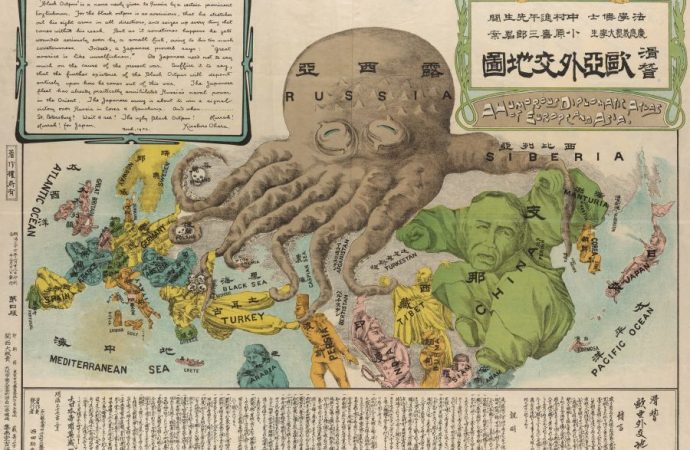
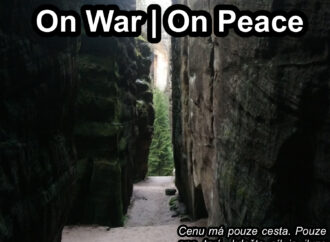
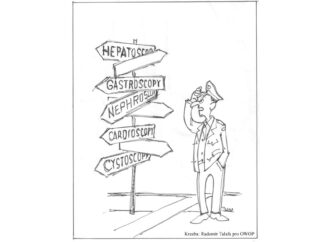


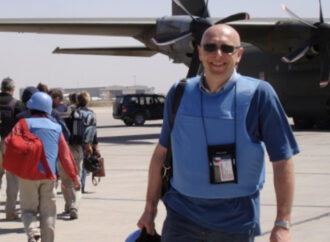
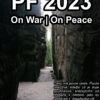

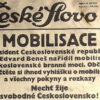

Leave a Comment
Your email address will not be published. Required fields are marked with *